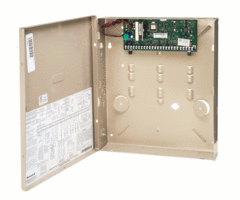Prevent Damage to Your Home with Freeze Sensors
Posted By Michael GorisHi DIYers! We know it has been awfully chilly out there lately. We thought it would be a good time to talk about freeze sensors and the benefits they provide. These devices are strongly recommended for anyone who lives in a colder area who wants to make sure their home is kept temperate.

Also called temperature sensors, freeze sensors alert a security system when the ambient temperature falls below a certain threshold. Usually, this is around 40 degrees Fahrenheit. That way, the user can take proper action to prevent their pipes from freezing. Remember, water freezes at 32 degrees Fahrenheit, and serious damage can occur if nothing is done in time. There are all sorts of horror stories of this happening while people are away for the day or on vacation.
Freeze sensors are particularly useful when used with an interactive service platform, such as Total Connect 2.0. These services will provide you with mobile alerts so that you will know if a situation occurs while you are away. Nearly every panel we sell can connect with one of these services. You just need the right communicator and monitoring plan.
While there are some standalone temperature sensors, freeze detection is often a secondary feature on a device. In fact, you might already have a device with freeze detection capabilities in your home and not even know it! The feature is commonly found on smoke detectors and flood sensors, so it never hurts to find out if your existing devices can also do freeze detection. For multi-function devices, freeze detection will usually operate on a specific Loop Number, and a unique system zone for freeze detection must be programmed.

If you're in the market for a new freeze sensor, you have plenty of options to choose from. The main thing to keep in mind is whether or not the device will work with your security system. If you are looking for a wireless sensor, then it must communicate at a compatible frequency. If you go the hardwired route, then your system must be able to support hardwired sensors. You might consider getting a smoke detector or a flood sensor that also includes the freeze detection function.
If you have a Honeywell or 2GIG System, then you likely use 345 MHz Sensors. The Honeywell 5821 is a convenient option for reliable freeze detection. You can also add a probe to have the 5821 Sensor double as a flood sensor. If you want a combination smoke and heat detector with freeze detection built-in, you might consider a Honeywell 5808W3.
For Interlogix Systems and the original Qolsys IQ Panel 2, you will want a 319.5 MHz Sensor. The Qolsys IQ Temp is a viable option. There's also the Interlogix TX-E611, which doubles as a flood sensor. For users also looking for a smoke, the Interlogix SDX-135Z also provides freeze detection.
If you have a Qolsys IQ Panel 2 Plus or a DSC PowerSeries Neo, then your system supports PowerG Sensors. In that case, you might go with the DSC PG9905. This sensor will offer the impressive range of PowerG, as well as extremely secure 128-bit AES encryption.
For users who want to go the hardwired route, the best bet is often to go with a smoke detector that includes the feature. We often steer customers towards 2-wire smokes, since they are easier to set up. A good option is the System Sensor 2WTA-B, which also includes a built-in sounder.
Users who are having trouble deciding on a freeze sensor can always reach out to Alarm Grid. We are happy to help you find the perfect device for your needs. You may email us at support@alarmgrid.com, or call us at (888) 818-7728 from 9am to 8pm EST M-F. We look forward to hearing from you!

















